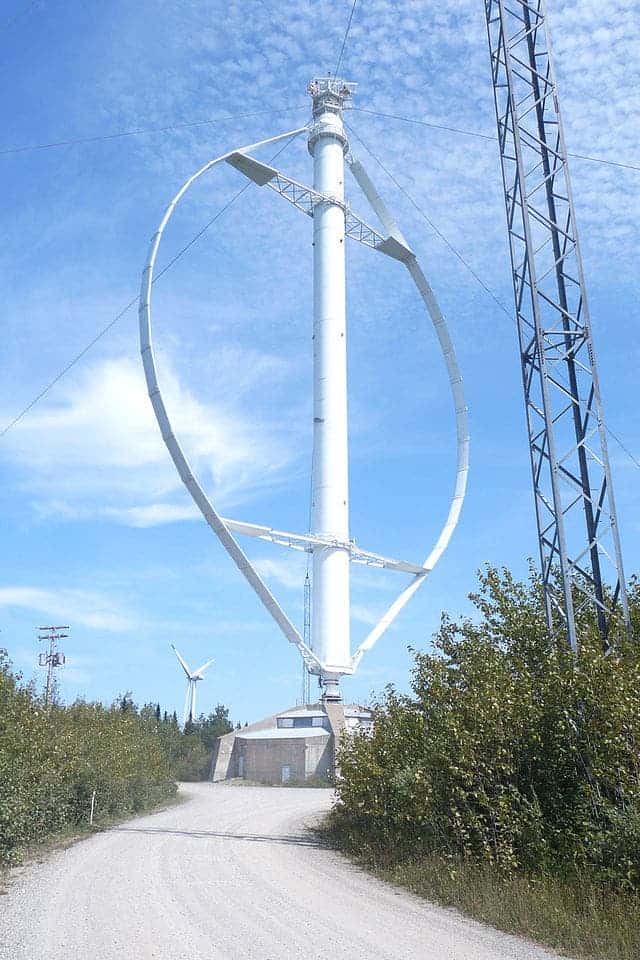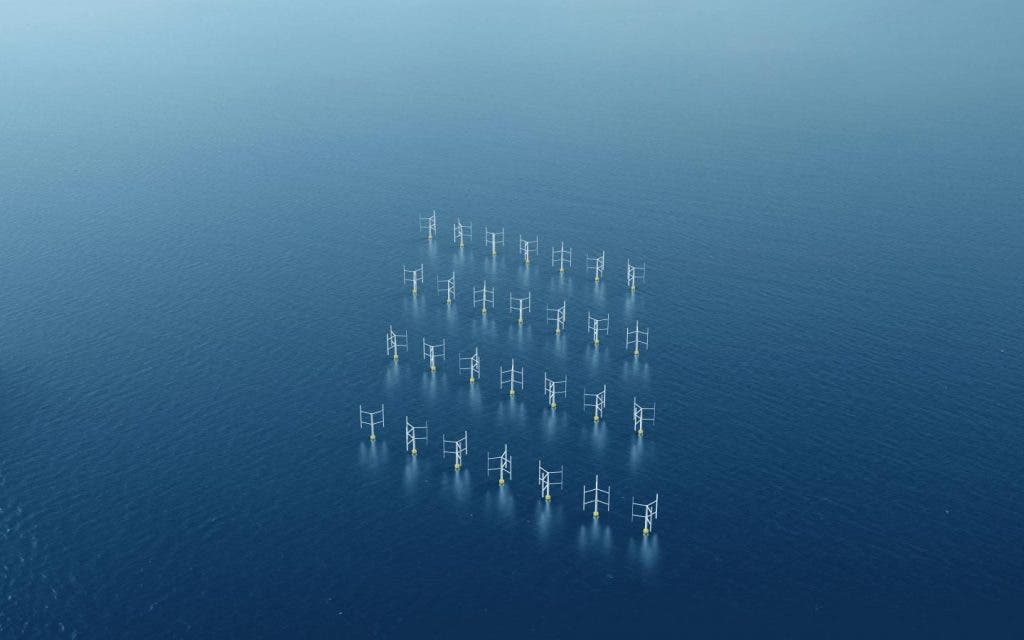The now-common sight of horizontal wind turbines might be eventually replaced by the scene of wind farms with more compact and efficient vertical turbines.
A team of UK researchers found that vertical axis wind turbines (VAWTs) are considerably more efficient than horizontal axis wind turbines (HATWs) – increasing performance by up to 15% when set in pairs.

Historically, vertical turbines have been relegated to fulfilling a small niche market in commercially available wind turbines. In the UK, for example, all large-scale wind farms with over 40 turbines use horizontal wind turbines. Nevertheless, recent studies are now showing that harnessing wind power using VATWs could also be a very viable option — and maybe even a better one.
Vertical wind turbines spin around an axis vertical to the ground, exhibiting the opposite behavior of horizontal turbines. They have their generator and gearbox at the base of the turbine, which helps service and repair. They also don’t need to be pointed into the wind, removing the need for wind-sensing and orientation mechanisms.
A group of researchers from Oxford Brookes University did a study into VAWTs using more than 11,500 hours of computer simulations to demonstrate that wind farms can perform more efficiently using vertical turbines. They found that vertical turbines increase each other’s performance if they are arranged in grid formations.
“Modern windfarms are one of the most efficient ways to generate green energy, however, they have one major flaw: as the wind approaches the front row of turbines, turbulence will be generated downstream. The turbulence is detrimental to the performance of the subsequent rows,” lead author Joachim Toftegaard Hansen said in a statement.

It’s the first study to comprehensively analyze many aspects of wind turbine performance, with regards to array angle, the direction of rotation, turbine spacing, and the number of rotors. It’s also the first research to investigate whether the performance improvements hold true for VAWT turbines set in a series – finding a 15% improvement.
For the researchers, the study makes it clear that the future of wind farms should be vertical. Iakovos Tzanakis, a co-author, explained that VAWTs can be designed to be much closer together compared to HAWTs, increasing their efficiency and lowering the price of electricity. In the long run, VAWTs can help accelerate the energy transition, he added.
The findings are then a key step to design more efficient wind farms, understand large-scale wind energy harvesting techniques and improve renewable energy technology to replace fossil fuels as sources of energy much faster. Wind power now accounts for 0.3% of the world’s energy could it’s expected to expand thanks to lower costs and more green policies. Of course, this is only a simulation — and field surveys will be required to confirm the validity of this work.
A report earlier this year by the International Energy Agency found that global offshore wind capacity could increase 15-fold and attract around $1 trillion (£800bn) of cumulative investment as soon as 2040. This is driven by the declining costs in installations, supportive government policies, and “remarkable technological progress.”
The Global Wind Report showed 2020 was the best year in history for the global wind industry with 93 GW of new capacity installed – a 53% year-on-year increase. But this isn’t sufficient. The world needs to be installing wind power three times faster over the next decade in order to stay on a net-zero pathway and avoid the worst impacts of climate change.
The study was published in the journal Renewable Energy.


